New perk: Easily find new routes and hidden gems, upcoming running events, and more near you. Your weekly Local Running Newsletter has everything you need to lace up! Subscribe today.
While many runners take to the trails to run races, there’s another realm of adventure running out in the wild that isn’t tied to running fast to reach a finish line. Combining the best aspects of hiking, backpacking, and fastpacking, tackling a bucket list trail run is all about immersing yourself in the outdoors and traveling at a pace appropriate for the terrain and enjoying the sights, the sounds and the simplicity of maneuvering along long-distance trails on foot. It’s often as much of an opportunity for personal introspection and soul searching as it is for sightseeing, exploration, and temporary escape.
Put these 10 adventure runs on your check list and talk a running buddy (or several) into doing one of these with you. It shouldn’t take much convincing! Be sure to train appropriately and research the logistics to prepare for what could be either a once-in-a-lifetime adventure or a route you’ll want to repeat year after year.
Tour du Mont-Blanc, France/Italy/Switzerland
Western Alps/Mount Blanc Massif
Distance: 100 miles
Trailheads: Chamonix, France/Champex-Lac, Switzerland/Courmayeur, Italy
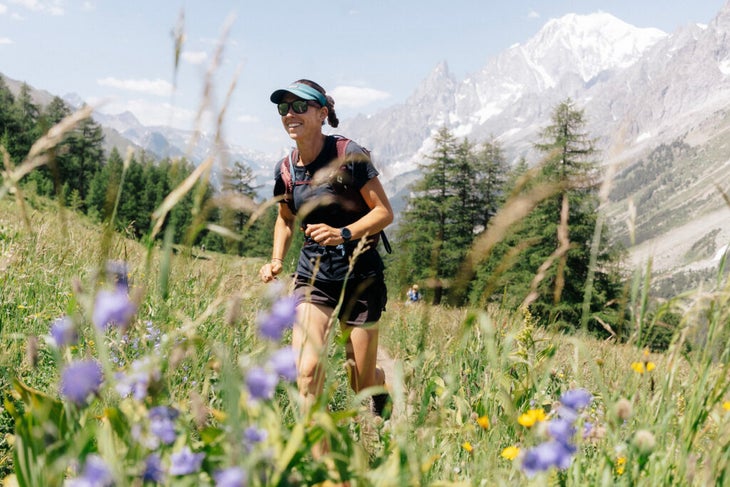
Starting in the hyperactive mountain town of Chamonix, France, at the base of 15,780-foot Mont Blanc (the highest peak in Western Europe), the 100-mile Tour du Mont Blanc loop is one of the most notable trails in the world of trail running. Although there are several arduous races set on this trail, doing a multi-day adventure run along the Tour du Mont-Blanc can be downright leisurely. Villages are nicely spaced, roughly 10 to 20 miles apart, to make for a six-day tour with 14-21 or so miles and 3,000- to 6,000 feet of climbing each day. The list of glowing adjectives and superlatives reads like hackneyed tourist office boilerplate: high alpine meadows ringing with cow bells, soaring peaks, French, Italian, and English mixing in the air at cozy mountain huts as bowls of polenta with fresh, local fontina cheese as dished out by the resident guardians, or caretakers. Running the TMB over the course of four to eight days is as dreamy as it sounds—with the right preparation. (Run the Alps offers numerous guided and unguided trips options on the TMB.)
RELATED: How to Do a Multi-Day Run on the Tour du Mont-Blanc Trail
Wonderland Trail, Washington
Mount Rainier National Park
Distance: 93 miles
Trailhead: Longmire, Washington
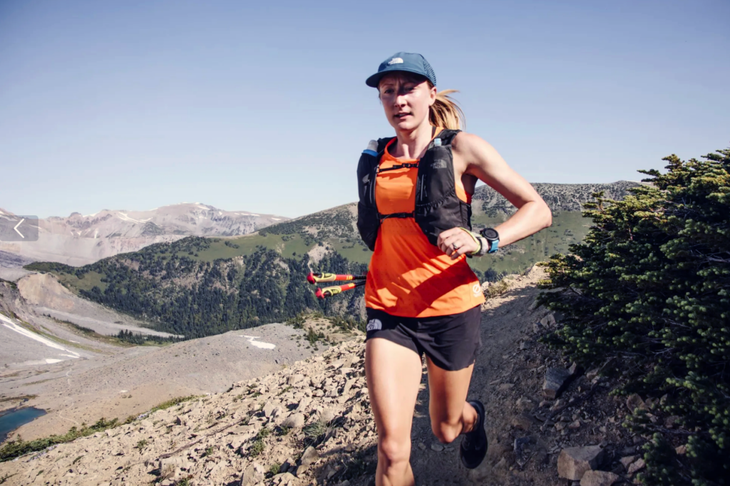
The 93-mile Wonderland Trail is a strenuous route that traverses lowland forests and valleys and high alpine regions as it circumnavigates 14,411-foot Mount Rainier. The trail was built by park rangers in 1915 and designated as a National Recreation Trail until 1981, but only in the past 10 years has it garnered a lot of attention from trail runners. It’s a rugged route with more than a dozen climbs and descents and 24,000 feet of elevation gain and loss—with a high point of 6,750 feet over Panhandle Gap—so it’s a big task to do as a continuous trail run. While the FKTs are unfathomably fast (Tyler Green ran it in 16 hours, 40 minutes, while Kaytlyn Gerbin covered it in 18:41), it’s more likely a 24- to 28-hour adventure run or fast-packing effort for most runners. (Aspire Adventure Running offers a three-day guided adventure run on the loop.) One of the highlights is running through the Cowlitz Divide portion of the trail, which offers many views of Mount Rainier and its numerous glaciers. There are several trailheads to start and plenty of points to resupply along the way, especially if you have a support crew.
RELATED: Here’s the Gear I Used to Run Around Mount Rainier.
Pemigewasset Loop, New Hampshire
White Mountain National Forest/Pemigewasset Wilderness
Distance: 31.4 miles
Trailhead: Lincoln, New Hampshire
Known by locals as the Pemi Loop, this 31.4-mile circuit includes eight of New Hampshire’s 48 4,000-foot peaks and each offers stunning views of the Pemigewasset Wilderness. The loop includes long stretches of technical surfaces through alpine forests and along exposed, above-tree line sections—including the Franconia Ridge Traverse and the Bonds Traverse—with 10,508 feet of climbing and descending and a high point of 5,260 feet on Mount Lafayette. It’s not an easy route to run and truly falls into the Beast Coast category of understated ruggedness. (For peak baggers, there are four other 4,000-foot peaks that can be tagged from trail offshoots.)
RELATED: Is Hut-to-Hut Running on Your Bucket List? It Should Be.
Grand Canyon Rim to Rim to Rim, Arizona
Grand Canyon National Park
Distance: 42-46 miles
Trailhead: Grand Canyon Village, Arizona
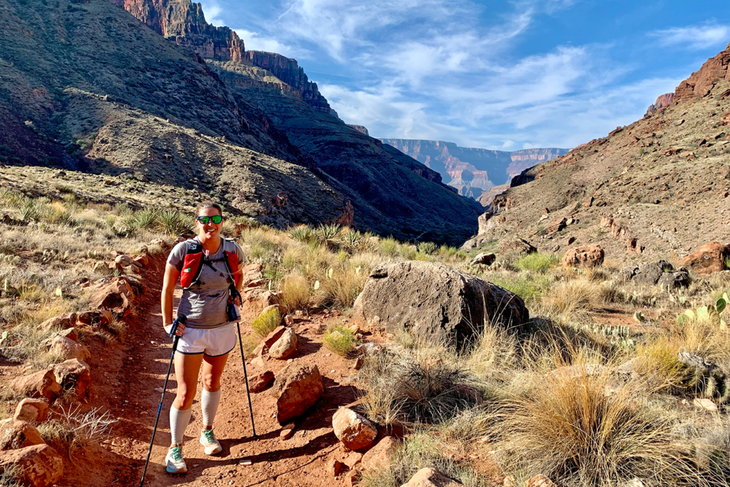
Running Rim to Rim to Rim across the Grand Canyon and back has become a classic bucket list trail run, and for good reason. It’s an iconic but arduous challenge—a 42- to 46-mile round trip (depending on the route) along mostly smooth and hard-packed trails with lofty climbs and descents on the way in and out at the South Rim and North Rim. There are numerous routes to choose from, but most trail runners opt for the straightforward (and often less crowded) South Kaibab and North Kaibab trails. (Starting at the South Rim is more popular because of its closer proximity to Phoenix, Flagstaff, and Las Vegas.) The best times to run the Grand Canyon are early spring (April-May) and early fall (September-October) when weather can be relatively mild with less of a chance of precipitation. Running Rim to Rim to Rim across the Grand Canyon and back is no small task and shouldn’t be undertaken without a significant level of fitness, trail running experience, and knowledge of the route. It’s not the mileage that is most difficult, it’s the cumulative vertical gain and descent (about 11,000 feet round trip)—and potentially the extreme heat—that can be most debilitating.
RELATED: A Guide to Running the Grand Canyon
Kalalau Trail, Hawaii
Nā Pali Coast State Wilderness Park
Distance: 11 miles (one way)
Trailhead: Kauai, Hawaii
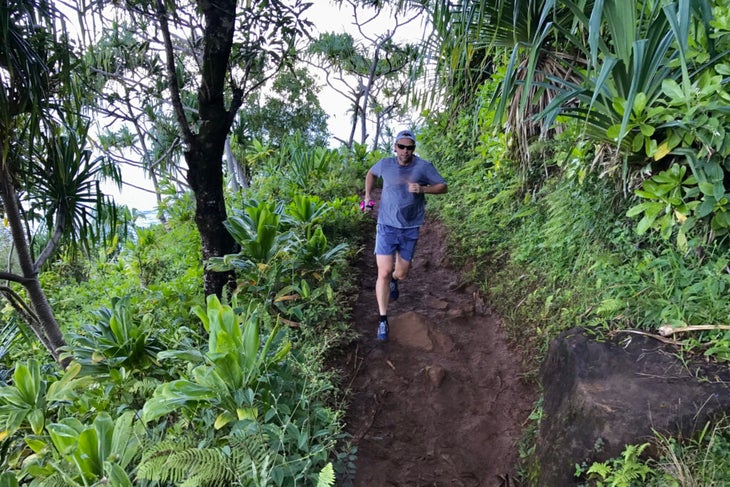
The 11-mile Kalalau Trail takes hikers and trail runners into exclusive territory as the trail provides the only land access to the spectacular Na’Pali Coast on the northwest side of the Hawaiian island of Kauai. Built by Native peoples in the late 1800s, the route begins at Keʻe Beach in Ha’ena State Park and traverses five lush valleys in the Hono O Nā Pali Natural Area Reserve before reaching its terminus at Kalalau Beach. Along the way, the trail offers towering sea cliffs, remote waterfalls, white sand beaches, and groves of guava trees, as well as ancient Hawaiian ruins. It takes a strenuous effort to complete an out-and-back 22-mile run because the trail includes big rocks with wet surfaces, muddy sections, stream crossings, and steep climbs and descents. While a dip in the ocean along the way would seem like an obvious way to cool off, it’s highly inadvisable as most of the beaches along the trail have strong rip currents, and high surf with dangerous shore breaks.
RELATED: 12 Road-Trip Worthy Mountain Running Races
Pawnee Buchanan Loop, Colorado
Indian Peaks Wilderness
Distance: 26.5 miles
Trailhead: Ward, Colorado
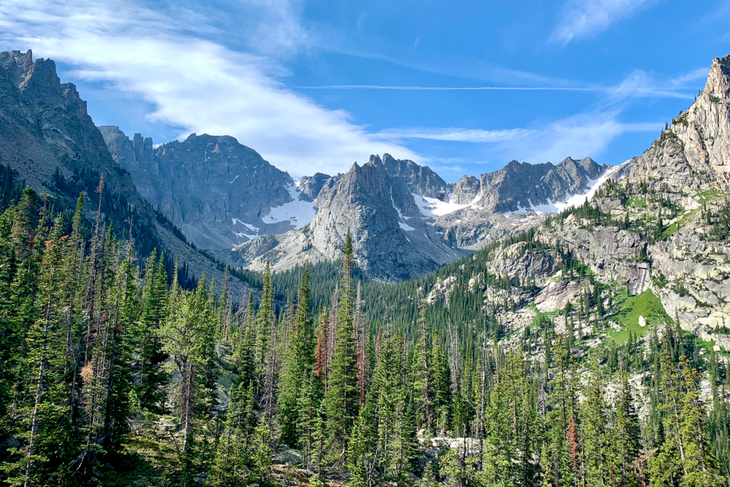
This 26.5-mile loop northwest of Boulder, Colorado, is a favorite training loop among local trail runners, especially during wildflower season between mid-June and late August. The loop traverses the Continental Divide as it circumnavigates several high mountains in the Indian Peaks Wilderness Area, including 13,209-foot Mount Audubon on the southern end and 12,268-foot Sawtooth Mountain on the northern end. The route is technical but very scenic, combining both dirt trails through forests and meadows and exposed, rocky trails above tree line. Even though pro trail runner Drew Holmen scorched the loop in about four and a half hours, most runners should expect a strenuous but leisurely run to take 6 to 9 hours.
Smokies Challenge Adventure Run, North Carolina/Tennessee
Great Smoky Mountains National Park
Distance: 70 miles
Trailhead: Fontana Dam, North Carolina
The Smokies Challenge Adventure Run (SCAR) is a 70-mile traverse of the Great Smoky Mountains National Park along the Appalachian Trail. The route is technical with a lot of steep climbs and descents, almost all of which is on remote singletrack trails. Starting at Fontana Dam in North Carolina, and going to Davenport Gap in Cosby, Tennessee, it includes 18,660 feet of vertical gain and descent—including 12,800 feet in first 40 miles and 5,860 feet in the final 30 miles. It’s been run under 16 hours numerous times—including Canyon Woodward’s mind-blowing FKT of 13 hours, 33 minutes in 2022—but it’s probably better approached as a 24- to 30-hour fastpacking adventure, especially considering there’s really only one access point to resupply.
Four Pass Loop, Colorado
Maroon Bells-Snowmass Wilderness
Distance: 27 miles
Trailhead: Aspen, Colorado
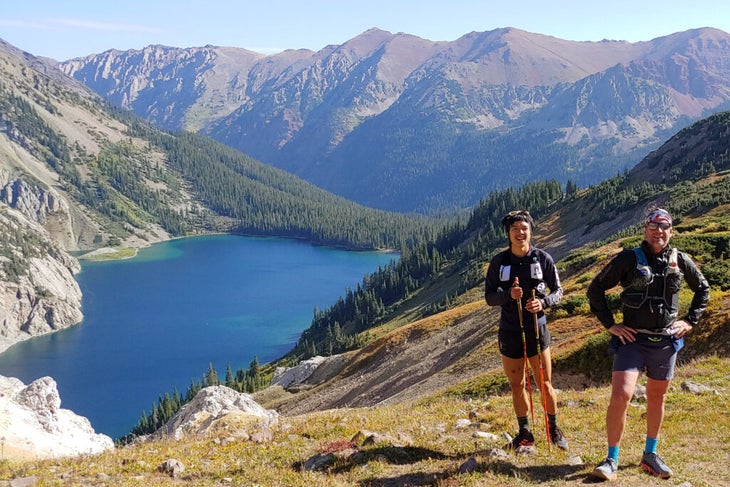
The Four Pass Loop is a spectacular 27-mile route that traverses four mountain passes higher than 12,000 feet in Colorado’s Maroon Bells-Snowmass Wilderness between Aspen and Crested Butte. The climbs and descents are enormous, but the high-alpine scenery is stunning. The route, which includes 7,500 feet of climbing and descending, passes through lush pine forests, next to clear alpine lakes, and among numerous rugged peaks of the Elk Range. While the route’s FKTs are fast (4:17 for men, 5:18 for women), a mountain-fit and adventurous trail runner will likely cover the loop between seven and 10 hours. There’s no resupply point on this remote loop, but a two-day option with an 11-mile diversion to Crested Butte could be possible from the south side of the loop. Have you already done 4PL? Try Rito Alto Four Pass Loop, a similar circuit in the Sangre de Cristo mountains near Westcliffe, Colorado, with nearly the same specs. That 23-mile loop also traverses four peaks that top out above 12,000 feet with about 6,200 feet of climbing and descending.
Rae Lakes Loop, California
Sequoia National Park/Kings Canyon National Park
Distance: 41.5 miles
Trailhead: Kings Canyon, California
The 41.5-mile Rae Lakes Loop is one of the most popular backpacking routes in the entire Sierra Nevada mountain range. But it’s also a fun challenge for trail runners looking for an aggressive single-day adventure that includes 7,670 feet of elevation gain and descent. (Permits are only required for overnight trips between May and September, but the trail operates under a quota system so plan ahead.) The highlight of a run around this loop is going over Glen Pass (also sometimes called Blue Flower Pass) perched between Charlotte Lake and Rae Lakes at 11,970 feet on a section of the John Muir Trail. (Pro tip: Running the loop in a clockwise direction from the Woods Creek trailhead is slightly easier because of the more gradual approach to Glen Pass.)
Zion Crossing, Utah
Zion National Park
Distance: 37 miles
Trailhead: Springdale, Utah
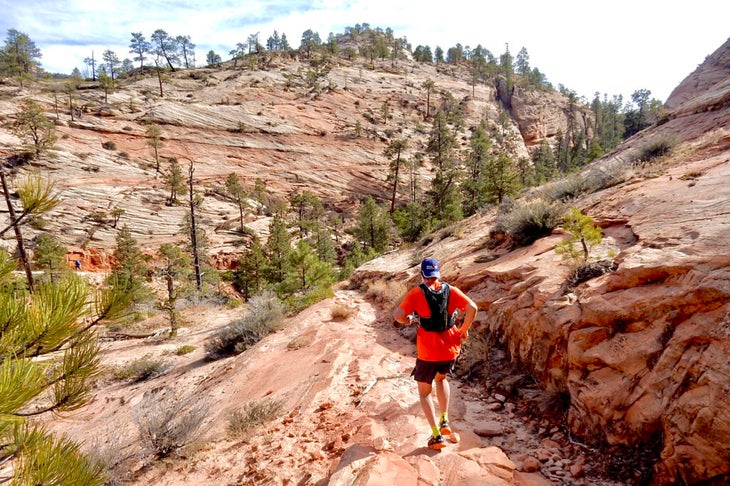
For many years, reasonably fit trail runners tackled the 48.5-mile Zion Traverse as a stunning sunrise-to-sunset bucket-list run. But a large rock fall in 2019 closed the East Rim Trail, as well as the very popular Observation Point, Weeping Rock, and Hidden Canyon Trails, and the National Park Service has no plans to rebuild it. Since then adventurous trail runners have run the 37-mile Zion Crossing as the next best alternative. The flowy route traverses dirt, and rocky singletrack through the interior of the park from Lee Pass across remote backcountry terrain that ends with a spectacular descent down the West Rim Trail into the Zion Valley. The Zion Crossing route sends runners through a variety of life zones, including desert, riparian, woodland, deciduous and, yes, one small and congested “tourist” zone that becomes obvious when you reach the valley. (To do the route, you need to shuttle cars or hire a private shuttle company to take you to the Lee Pass Trailhead on the west side of the park.)

